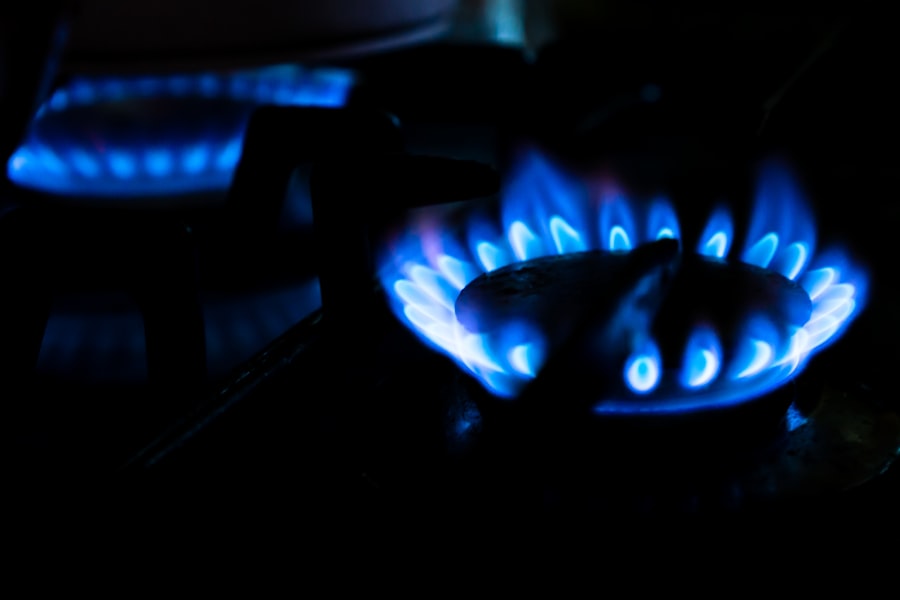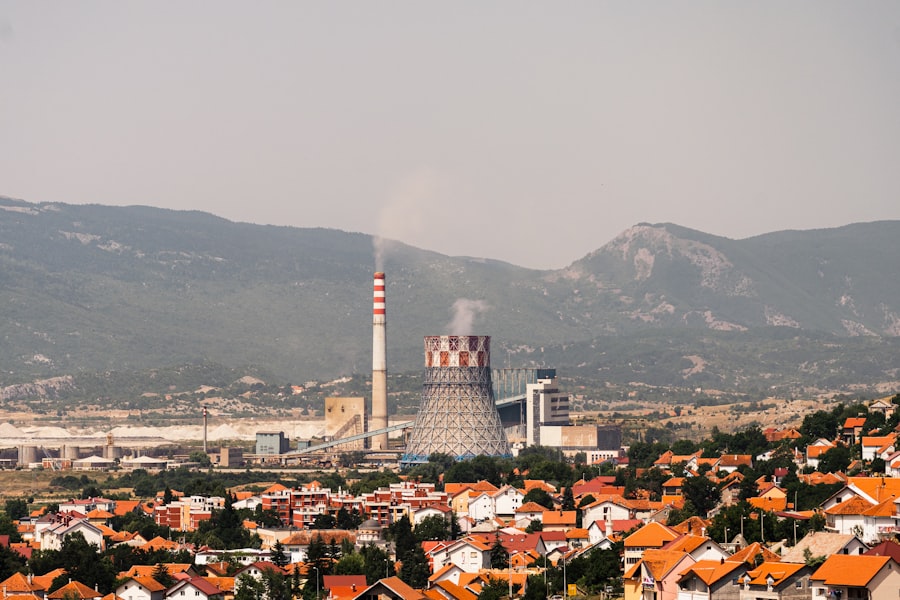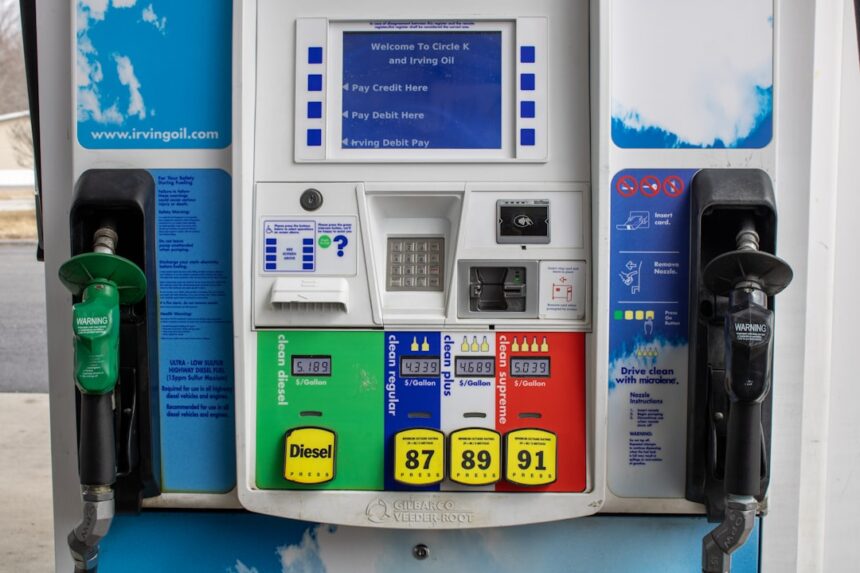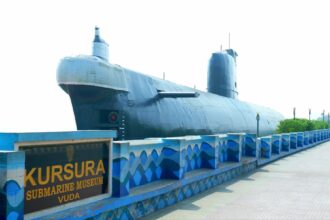In the early days of European gas supply, the landscape was markedly different from what it is today. The origins of natural gas in Europe can be traced back to the late 19th century when gas was primarily produced from coal. This early form of gas, known as town gas, was used for lighting and heating in urban areas.
The industrial revolution played a pivotal role in the expansion of gas usage, as cities grew and the demand for energy surged. However, it wasn’t until the mid-20th century that natural gas began to emerge as a significant energy source, largely due to the discovery of vast reserves in the North Sea and other regions. The transition from coal-derived gas to natural gas marked a significant technological advancement.
Natural gas was found to be cleaner and more efficient than its predecessor, leading to its adoption in various sectors, including residential heating, electricity generation, and industrial processes. The establishment of national gas companies and the development of infrastructure for transportation and distribution laid the groundwork for a more integrated European gas market. This period set the stage for the complex dynamics that would later characterize European gas supply, as countries began to recognize the strategic importance of securing reliable energy sources.
Key Takeaways
- The early days of European gas supply were marked by the development of natural gas infrastructure and the establishment of long-term supply contracts.
- Russia plays a significant role in European gas supply, providing a large portion of the region’s natural gas through pipelines such as Nord Stream and TurkStream.
- The impact of shale gas on European supply has been limited due to environmental concerns and regulatory challenges, but it has the potential to diversify the region’s gas supply in the future.
- The rise of LNG in European gas supply has increased flexibility and competition, with the construction of new import terminals and the expansion of global LNG trade.
- The development of gas pipelines in Europe has been influenced by geopolitical factors, with projects such as the Southern Gas Corridor aiming to reduce dependence on Russian gas.
- The transition to renewable gas sources in Europe is gaining momentum, with the potential to reduce carbon emissions and enhance energy security in the long term.
- Energy security is of utmost importance in European gas supply, with efforts focused on diversifying supply sources and improving infrastructure resilience.
- The future of European gas supply presents both challenges and opportunities, including the need for investment in infrastructure and the potential for increased cooperation with alternative energy sources.
- Regulation plays a crucial role in European gas supply, shaping market dynamics and ensuring fair competition among suppliers and consumers.
- There is potential for innovation in European gas supply, including advancements in technology, digitalization, and the integration of renewable and low-carbon gases into the energy mix.
The Role of Russia in European Gas Supply
Russia has long been a dominant player in the European gas supply landscape, with its vast reserves and extensive pipeline network positioning it as a key supplier. The Soviet Union’s early investments in gas extraction and infrastructure laid the foundation for what would become a critical energy relationship with Europe. By the 1970s, Russia had established itself as a major exporter of natural gas, with pipelines such as the Brotherhood pipeline connecting it directly to Western Europe.
This relationship was not merely economic; it was also deeply intertwined with political considerations, as energy became a tool for exerting influence. In recent years, Russia’s role in European gas supply has been increasingly scrutinized due to geopolitical tensions and concerns over energy security. Events such as the annexation of Crimea in 2014 and ongoing conflicts in Eastern Europe have raised alarms about Europe’s dependence on Russian gas.
As a result, many European nations have sought to diversify their energy sources and reduce reliance on Russian imports. Nevertheless, Russia remains a crucial supplier, accounting for a significant portion of Europe’s natural gas consumption. The intricate balance between energy needs and geopolitical realities continues to shape the dynamics of European gas supply.
The Impact of Shale Gas on European Supply

The advent of shale gas extraction in the United States has had profound implications for global energy markets, including Europe. The technological advancements that made shale gas extraction economically viable led to a dramatic increase in U.
production, resulting in lower prices and a shift in trade patterns.
As European countries observed the success of shale gas in the U.S., discussions about tapping into their own shale reserves began to gain traction. However, the response has been mixed due to environmental concerns and regulatory hurdles.
Countries like Poland and the UK have pursued shale gas projects with varying degrees of success, but overall production has not reached levels seen in the U.S. This divergence highlights the complexities of energy policy in Europe, where economic interests must be balanced against environmental considerations. The impact of shale gas on European supply remains a contentious issue, influencing debates about energy independence and sustainability.
The Rise of LNG in European Gas Supply
| Year | LNG Imports (bcm) | Percentage of Total Gas Supply |
|---|---|---|
| 2010 | 42 | 10% |
| 2015 | 54 | 13% |
| 2020 | 74 | 18% |
Liquefied natural gas (LNG) has emerged as a transformative force in the European gas supply landscape. The ability to transport natural gas in liquid form has opened up new avenues for sourcing energy from diverse global markets. As LNG technology advanced, Europe began to invest heavily in regasification terminals and infrastructure to accommodate this new form of energy.
The flexibility offered by LNG allows countries to diversify their supply sources and reduce dependence on traditional pipeline routes. The rise of LNG has also been driven by geopolitical considerations, particularly in light of tensions with Russia. Countries such as the United States and Qatar have become significant suppliers of LNG to Europe, providing alternatives that enhance energy security.
The ability to import LNG from various regions has not only increased competition among suppliers but has also contributed to price stabilization in the market. As Europe continues to navigate its energy transition, LNG is expected to play an increasingly vital role in ensuring a reliable and diverse energy supply.
The Development of Gas Pipelines in Europe
The development of gas pipelines has been instrumental in shaping Europe’s energy landscape. A complex web of pipelines connects various countries, facilitating the flow of natural gas across borders and ensuring that supply meets demand. Major projects such as Nord Stream and South Stream have underscored the importance of pipeline infrastructure in securing energy supplies from distant sources.
These pipelines not only transport gas but also serve as strategic assets that can influence geopolitical relationships. However, the development of new pipelines has not been without controversy. Environmental concerns, regulatory challenges, and political opposition have often delayed or derailed proposed projects.
For instance, the Nord Stream 2 pipeline faced significant scrutiny from both European nations and the United States due to concerns over increased reliance on Russian gas. As Europe grapples with its energy future, the balance between expanding pipeline infrastructure and addressing environmental and political challenges will be crucial in determining how effectively it can secure its energy needs.
The Influence of Geopolitics on European Gas Supply

Geopolitical factors play a critical role in shaping European gas supply dynamics. The intersection of energy needs and international relations creates a complex landscape where decisions are influenced by both economic considerations and political agendas. Europe’s reliance on external suppliers, particularly Russia, has made it vulnerable to geopolitical tensions that can disrupt supply chains.
Events such as conflicts in Ukraine or sanctions imposed on Russia can have immediate repercussions on gas availability and pricing. In response to these challenges, European nations have sought to enhance their energy security through diversification strategies. This includes investing in renewable energy sources, increasing domestic production, and forging new partnerships with alternative suppliers.
The geopolitical landscape continues to evolve, with emerging players such as Azerbaijan and North African countries becoming increasingly important in supplying natural gas to Europe. As geopolitical tensions persist, Europe’s approach to securing its gas supply will remain a critical focus for policymakers.
The Transition to Renewable Gas Sources in Europe
As Europe confronts the pressing challenges of climate change and sustainability, the transition to renewable gas sources has gained momentum. Biogas and hydrogen are emerging as viable alternatives that can complement traditional natural gas supplies while reducing carbon emissions. Biogas production from organic waste offers a sustainable way to generate energy while addressing waste management issues.
Similarly, hydrogen is being explored as a clean fuel that can be produced from renewable sources or through low-carbon methods. The transition to renewable gases presents both opportunities and challenges for Europe’s energy landscape. On one hand, it aligns with broader climate goals and enhances energy security by reducing dependence on fossil fuels.
On the other hand, significant investments in infrastructure and technology are required to facilitate this transition effectively. Policymakers are tasked with creating supportive regulatory frameworks that encourage innovation while ensuring that renewable gases can be integrated into existing energy systems seamlessly.
The Importance of Energy Security in European Gas Supply
Energy security is paramount for Europe as it navigates an increasingly complex global energy landscape. The reliance on external suppliers for natural gas raises concerns about vulnerability to supply disruptions caused by geopolitical tensions or market fluctuations. Ensuring a stable and reliable energy supply is essential not only for economic stability but also for national security.
As such, European nations are prioritizing strategies that enhance their energy independence while maintaining access to diverse sources. To bolster energy security, many countries are investing in infrastructure improvements, including storage facilities and interconnectors that facilitate cross-border trade. Additionally, efforts to diversify supply sources through increased imports of LNG and renewable gases are gaining traction.
By fostering collaboration among member states and promoting regional initiatives, Europe aims to create a more resilient energy system capable of withstanding external shocks while meeting its climate commitments.
The Future of European Gas Supply: Challenges and Opportunities
The future of European gas supply is characterized by both challenges and opportunities as the continent grapples with evolving energy demands and environmental imperatives. One significant challenge lies in balancing short-term energy needs with long-term sustainability goals. As Europe transitions away from fossil fuels, there is an urgent need to ensure that existing infrastructure can accommodate new technologies while minimizing environmental impacts.
Opportunities abound as well; advancements in technology present avenues for innovation within the gas sector. Carbon capture and storage (CCS) technologies offer potential solutions for mitigating emissions from natural gas use while enabling continued reliance on this resource during the transition period. Furthermore, investments in research and development can drive breakthroughs that enhance efficiency across the entire supply chain—from extraction to consumption—ultimately leading toward a more sustainable future.
The Role of Regulation in European Gas Supply
Regulation plays a crucial role in shaping the dynamics of European gas supply by establishing frameworks that govern market operations, competition, and environmental standards. The European Union has implemented various directives aimed at creating an integrated internal market for natural gas while ensuring fair competition among suppliers. These regulations are designed not only to protect consumers but also to promote investment in infrastructure necessary for a secure energy future.
However, regulatory challenges persist as member states navigate differing national interests and priorities within this framework. Balancing market liberalization with environmental protection requires careful consideration from policymakers who must address both economic growth and sustainability goals simultaneously. As Europe continues its journey toward decarbonization, effective regulation will be essential in guiding the transition while maintaining stability within the gas market.
The Potential for Innovation in European Gas Supply
Innovation holds significant potential for transforming European gas supply into a more sustainable and resilient system capable of meeting future demands. Emerging technologies such as digitalization are revolutionizing how natural gas is produced, transported, and consumed—enhancing efficiency throughout the value chain while reducing costs associated with traditional methods. Moreover, research into alternative fuels like hydrogen presents exciting possibilities for decarbonizing sectors traditionally reliant on fossil fuels—such as transportation and heavy industry—while leveraging existing natural gas infrastructure where feasible.
Collaborative efforts between governments, industry stakeholders, and research institutions will be vital in fostering an environment conducive to innovation that drives progress toward achieving ambitious climate targets while ensuring reliable access to energy resources. In conclusion, Europe’s journey toward securing its gas supply is marked by historical developments, geopolitical complexities, technological advancements, regulatory frameworks, and an ongoing commitment to sustainability. As challenges arise amidst shifting global dynamics, opportunities for innovation will pave the way forward—ultimately shaping a more resilient energy future for Europe.
In the context of discussing the future of European gas supply, it’s essential to consider the geopolitical and economic factors that influence energy policies and strategies. An insightful related article can be found on the website “In The War Room,” which delves into the complexities of energy security and the shifting dynamics of global energy markets. This article provides a comprehensive analysis of how European countries are navigating the challenges of reducing dependency on external gas supplies while transitioning to more sustainable energy sources. For a deeper understanding of these issues, you can read the full article by visiting In The War Room.
WATCH THIS! The FSB’s Hidden War on Europe’s Pipelines
FAQs
What is the current state of European gas supply?
As of now, Europe relies heavily on natural gas for its energy needs, with a significant portion of its supply coming from Russia.
What are the challenges facing the future of European gas supply?
The future of European gas supply faces challenges such as geopolitical tensions, the need to diversify supply sources, and the transition to renewable energy.
How is Europe working to diversify its gas supply sources?
Europe is working to diversify its gas supply sources by investing in liquefied natural gas (LNG) terminals, exploring new pipeline routes, and increasing its renewable energy capacity.
What role does renewable energy play in the future of European gas supply?
Renewable energy is expected to play a significant role in the future of European gas supply, as the continent aims to reduce its reliance on fossil fuels and meet its climate goals.
What are the potential implications of the future of European gas supply on energy prices?
The future of European gas supply could have implications on energy prices, with potential impacts on consumer costs and the competitiveness of European industries.




